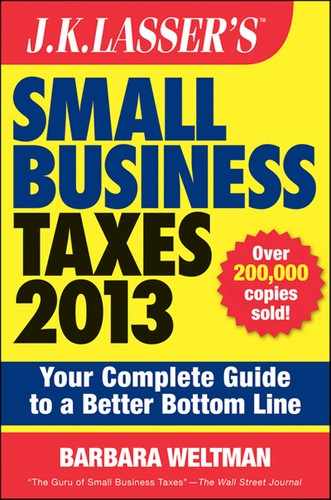Deduction Limits for Alternative Minimum Tax
Certain deductions that were allowed for regular tax purposes may be disallowed or modified for AMT. The following deductions that were claimed on individual returns may not be deducted for AMT purposes:
- Personal exemptions
- Any addition to the standard deduction
- Itemized deduction for taxes
- Itemized deduction for miscellaneous expenses
The following deductions that were claimed on individual returns must be modified for AMT purposes:
- Investment interest.
- Itemized deduction for medical expenses (only expenses in excess of 10% of adjusted gross income are deductible for AMT purposes, while those in excess of 7.5% of AGI are deductible for regular tax purposes).
- Itemized deduction for home mortgage interest (only interest to buy, build, or substantially improve a principal residence or second home is deductible for AMT purposes, while interest on home equity loans used for other purposes may be deductible for regular tax purposes).
- Depreciation.
- Net operating losses (NOLs).
- Mining exploration and development costs (the regular tax deduction must be amortized over 10 years).
- Research and experimentation expenditures (costs must be amortized over 10 years if you are not a material participant in the business).
- Passive activity losses from nonfarming activities (losses are adjusted for items not deductible for AMT purposes).
ADJUSTMENTS FOR DEPRECIATION
The depreciation method that you use for regular tax purposes may require that an adjustment be made for AMT purposes. For AMT purposes you are allowed only a limited depreciation deduction. If you claimed more for regular tax purposes, you must adjust your AMT income accordingly.
For property (other than real property) acquired after 1986, your AMT depreciation is limited to the 150% declining balance method, switching to straight line when a larger depreciation deduction results. For real property acquired after 1986, your AMT depreciation is limited to straight line over 40 years.
For real property placed in service after December 31, 1998, an AMT adjustment is no longer required. For personal property placed in service after this date, a depreciation election can be made to use the same depreciation method for regular and AMT purposes so that an AMT adjustment is avoided. By making this election, depreciation is figured using the 150% declining balance method over the regular tax recovery period (instead of the 200% declining balance method). For an explanation of these depreciation methods, see Chapter 14.
PREFERENCE ITEMS
Certain items that may have escaped the regular tax are subject to AMT. These include:
- Tax-exempt interest on private activity bonds issued after August 7, 1986.
- Exclusion of 50% of the gain on the sale of small business stock (see Chapter 5).
- Oil and gas preferences.
- Accelerated depreciation on real property acquired before 1987.
NET OPERATING LOSSES
The NOL deduction for regular tax purposes must be adjusted for AMT. This is because only a limited NOL deduction is allowed for AMT purposes. The NOL for AMT purposes is the regular tax NOL except that the nonbusiness deduction adjustment includes only AMT itemized deductions (i.e., state and local taxes and certain other deductions cannot be used to figure the NOL deduction).
You may be able to eliminate your AMT liability because of your NOL deduction. However, the NOL deduction cannot be more than 90% of AMT income (without regard to the NOL deduction). If you cannot use all of your NOL because of the 90% limit, you may carry it back and forward under the applicable carryback/carryforward periods (explained in Chapter 23). However, the carryback and carryforward NOLs are also subject to the 90% limit.
OTHER ADJUSTMENTS AND PREFERENCES
In figuring AMT income on which AMT tax is imposed, certain income items are also given special treatment. These include incentive stock options, long-term contracts, tax-exempt interest on private activity bonds, and basis adjustments for AMT gain or loss.
For C corporations other than small C corporations, the key adjustment that can trigger AMT is the ACE adjustment. However, since small corporations are exempt from AMT, this adjustment is not explained further.
